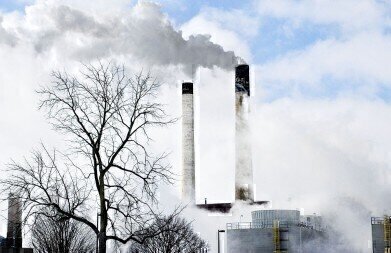Air Clean Up
What Are the Industrial Targets for Carbon Capture?
May 13 2021
According to the latest figures compiled by the Intergovernmental Panel on Climate Change (IPCC), the industrial sector is responsible for more carbon emissions than both transportation and energy, accounting for approximately 30% of all greenhouse gas emissions worldwide. Understandably, industry is expected to make significant contributions towards cleaning up its act.
That will involve reducing the amount of carbon that the sector emits, but will also necessitate the removal of CO2 that is already present in our atmosphere. That’s due to the fact that the current concentrations of carbon in the environment are unsustainably high if the planet is to attain the objectives agreed upon at the 2015 Paris Summit of limiting global warming to a maximum of 2°C.
Some progress – but not enough
In the five-and-a-half years since the world’s leaders put pen to paper on a momentous accord to address the issue of climate change, some gains have been made in certain sectors. Renewable energy continues to enjoy increasing popularity, air quality at construction works and demolitions has become a mainstream cause for concern and transportation methods are transitioning towards greener alternatives.
However, industry is one sector which has not, as yet, been pulling its weight. Even though industry now accounts for a smaller percentage of global GDP than it did in 1990, the overall carbon emissions produced by the sector have increased by around 50%. From 10.4 gigatons (Gt) of CO2 in 1990, the sector has ballooned to now produce annual emissions of 15.4Gt in 2010 (the latest year for which data is available).
As such, major industrial polluters must strive towards cleaning up their act, via the use of cleaner fuel sources, energy-efficient technology and more sustainable business practices. Additionally, they must also capture carbon at the point of emission using carbon capture and storage (CCS) technology, which is capable of removing CO2 from emissions streams and storing it safely underground.
Fluid targets
Globally, it’s difficult to say exactly how much carbon will need to be captured by industry in order to meet the Paris objectives, since the specific figure will depend upon how rapidly and effectively emissions can be reduced. However, it’s believed that in order to stay under the 2°C ceiling, carbon concentrations will have to be stabilised at around 350 parts per million (ppm).
Current data suggests that the amount of carbon our atmosphere significantly exceeds that threshold, at around 415ppm (and growing by about 2.5ppm each year). Therefore, industry must take all relevant steps to put in place CCS technology as quickly as possible, including the gas purity analysis equipment which is so important for ensuring that the captured carbon can be stored safely in saline aquifers underneath the surface of the Earth.
For its part, the UK has set British industry some ambitious goals. As well as decarbonising industry emissions by 66% by 2045 and 90% by 2050, the government have also earmarked a target of capturing three megatons of CO2 every year by 2030. This will involve the installation of two carbon capture clusters by 2025 and two more by 2030, setting an example for the rest of the industrial world to follow.
Events
WEATHER • CLIMATE • WATER / EARTH OBSERVATIONS / GREEN ECONOMY
Oct 29 2024 St. Petersburg, Russia
Oct 30 2024 Hong Kong
Nov 05 2024 Toronto, Canada
Nov 06 2024 Ho Chi Minh City, Vietnam
Nov 12 2024 Valencia, Spain













